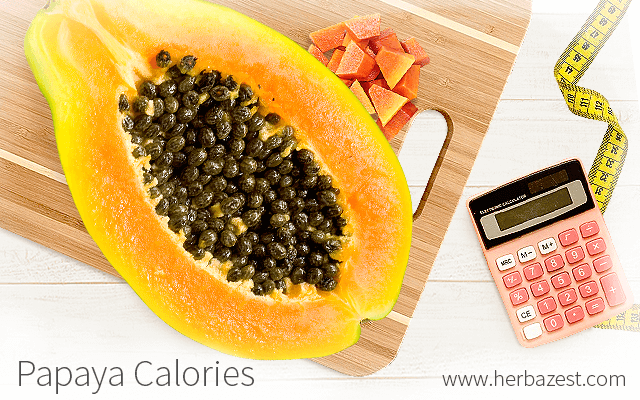Many people consider papayas to be delicious, sweetly-fleshed tropical fruits. However, intent on maintaining a balanced and healthful diet, some consumers are asking themselves, "is papaya fattening?" Despite this very common worry, papaya's calories – derived from its wide selection of important phytonutrients – are not as significant as in some other fruits.
What Are Calories?
The content of calories in foods like papaya sum up the quantifiable energy contained in essential nutrients, such as proteins, sugars, fats, and carbohydrates. These allow the body to complete important functions and provide it with the energy needed to perform everyday tasks. Thus, calories are an abstract measure of the energy found in all foods.
Eating, breathing, digesting food, and every other action performed by the body requires energy. Knowing the amount of calories you consume helps you follow an adequate, balanced diet in correlation to your daily levels of physical activity and energy requirements. That is why counting calories plays an important role in effective weight management.
SINCE THE BODY CAN ONLY USE THE CALORIES IT NEEDS, WHEN YOU CONSUME MORE THAN THE NECESSARY AMOUNT TO ACHIEVE YOUR DAILY CHORES, THE EXCESS IS STORED AS FAT.
As a general rule, moderately active men need to consume about 2,500 calories per day, while an average woman requires about 2,000 calories daily. These individual recommendations vary according to age, sex, weight, and physical activity level. Interestingly, most nutrition labels are based on a diet of 2,000 calories.
Calories in Papaya
Though they provide only a mere 2% of the recommended daily value (DV), papaya's calories complement a caloric intake that is rich in diversified sources of food energy.
THE AMOUNT OF CALORIES IN 100 GRAMS OF PAPAYA IS APPROXIMATELY 43.
Papayas are mid-range fruits that provide about the same amount of calories per serving as other similar-tasting fruits, like melons, strawberries, and pineapples, all of which contain between 30 - 50 calories per 100-gram serving. Meanwhile, low-calorie fruits like tomatoes and high-calorie fruits like avocados provide 18 and 160 calories, respectively.
Even though they in part come from proteins and fats, papaya's calories are primarily derived from its content of carbohydrates, which play a role not only in the flavor and overall commercial value of the crop, but also in their medicinal benefits. In Hawaii, where the plant is extensively cultivated, papaya industry standards require a minimum of 11.5% of sugars. By comparison, a small avocado has three times as many calories, but 10 times less sugar than a hawaiian papaya.
It is important to note that calories in papaya are greatly amplified as the fruits ripen over time. With a low content of sugars and calories, immature, green papaya fruits have often been prepared as vegetables for this very reason.
Papayas are nutritious fruits that provide the body with the energy it needs to maintain proper function. Through diet and exercise, you can ensure that papaya's calories are used in a manner that is beneficial to your overall health and well-being.
Sources
- National Health Service, Understanding calories
- National Institutes of Health, Balance food and activity | Protein, carbohydrates & fats
- U.S. Department of Veterans Affairs, Nutrition and Food Services, Calorie content food list
- University of Hawaii, Source-sink relationship during papaya fruit growth and development
- USDA Center for Nutrition Policy and Promotion, Estimated calorie needs per day by age, gender, and physical activity level
- USDA Nutrient Database, Papayas, raw | Avocados, raw, all commercial varieties | Mangos, raw | Bananas, raw | Melons, cantaloupe, raw | Kiwifruit, green, raw | Melons, honeydew, raw | Strawberries, raw | Pineapple, raw, all varieties




